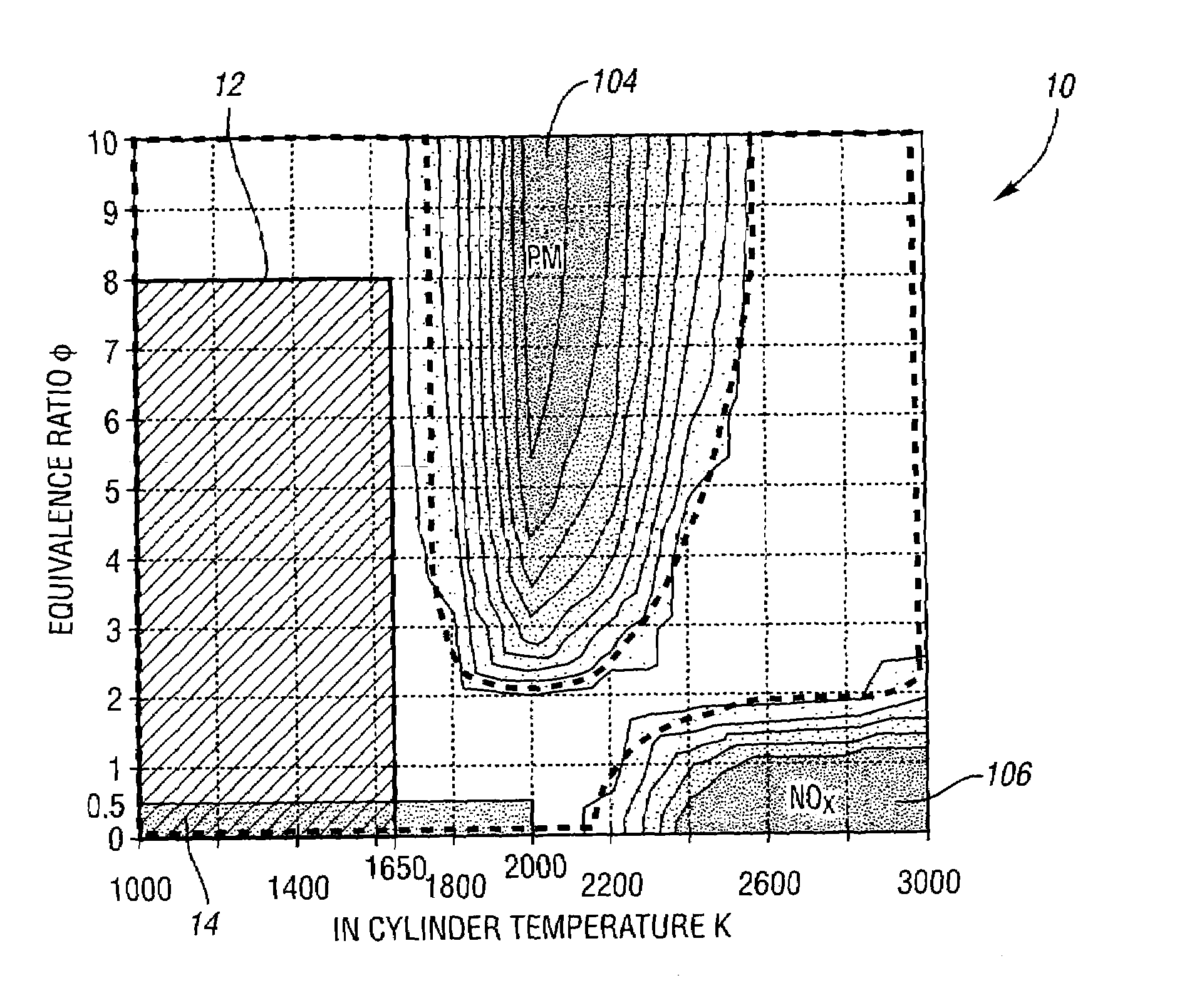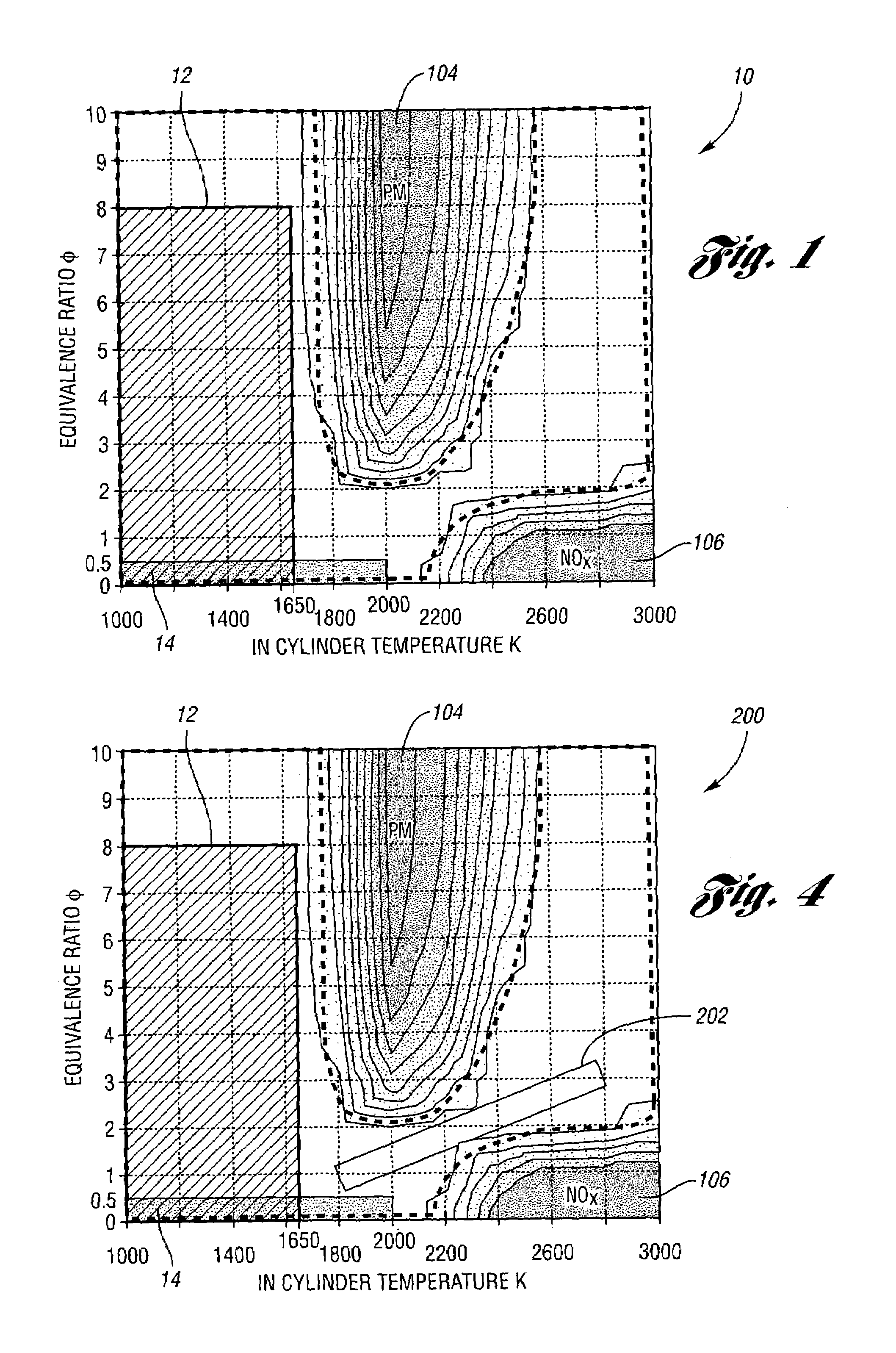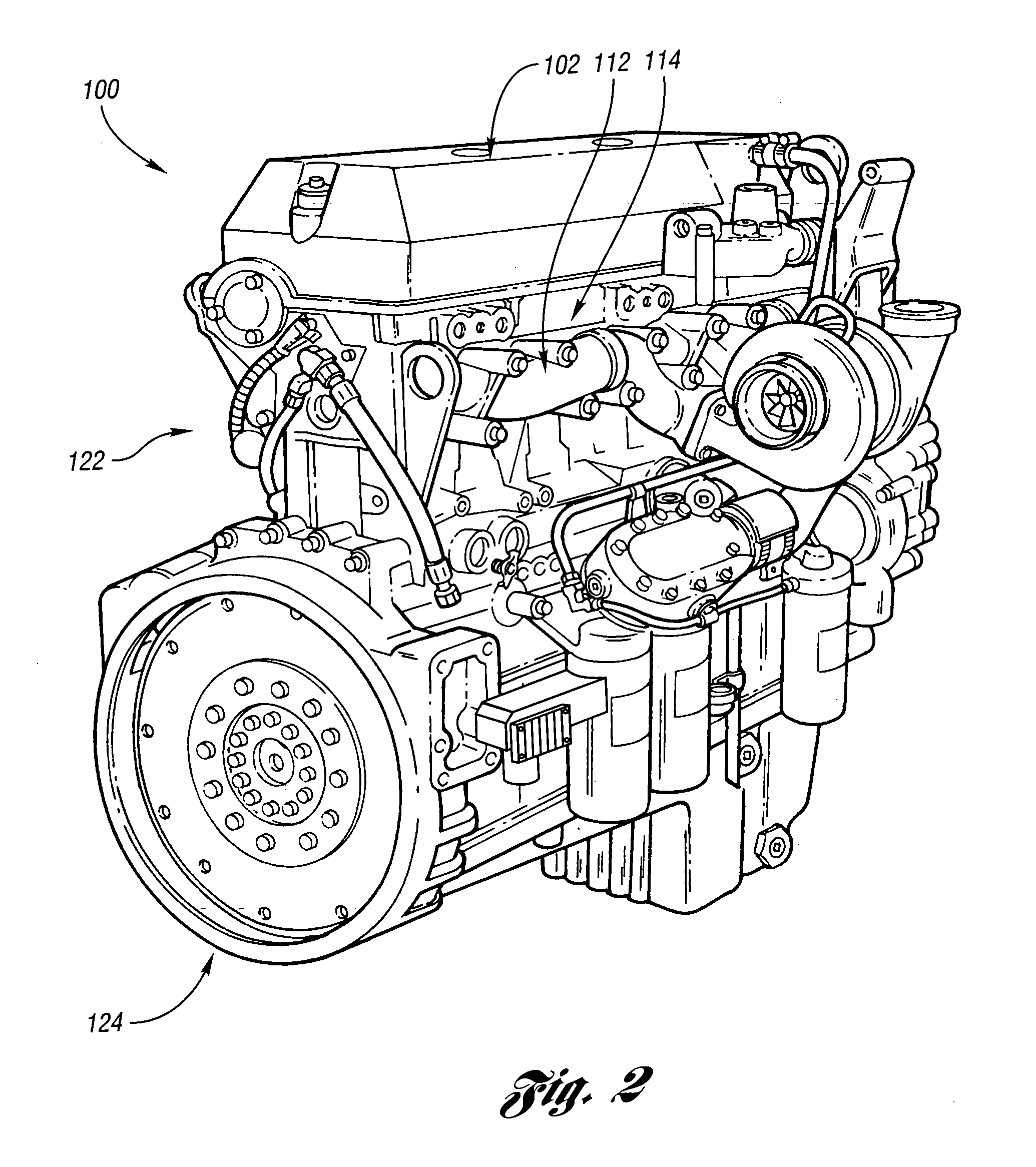System and method for reducing compression ignition engine emissions
a compression ignition and engine technology, applied in the direction of braking systems, electric control, instruments, etc., can solve the problems of excessive penalties for fuel consumption, hydrocarbon and carbon monoxide emissions, and the inability to limit the engine to light load applications, so as to improve the effectiveness of conventional post-combustion emission treatment devices
- Summary
- Abstract
- Description
- Claims
- Application Information
AI Technical Summary
Benefits of technology
Problems solved by technology
Method used
Image
Examples
Embodiment Construction
)
[0023]With reference to the Figures, the preferred embodiments of the present invention will now be described in detail. Generally, the present invention provides an improved system and an improved method for controlling (e.g., reducing, limiting, minimizing, optimizing, etc.) the formation of nitrogen oxides (i.e., oxides of nitrogen, NOx) and particulate matter (PM) during a compression ignition combustion process when the engine is operating under medium or heavy load conditions in addition to light load conditions. The range of operation of the present invention is generally broad. In one example, the range of operation includes engine speeds of 600 RPM to 4000 RPM and loads up to 8 bar brake mean effective pressure (BMEP). Furthermore, the present invention may enhance the effectiveness of conventional post-combustion emission treatment devices (i.e., after-treatment devices) by providing higher exhaust temperatures, enhanced control of carbon monoxide (CO) and hydrocarbon (HC...
PUM
 Login to View More
Login to View More Abstract
Description
Claims
Application Information
 Login to View More
Login to View More - R&D
- Intellectual Property
- Life Sciences
- Materials
- Tech Scout
- Unparalleled Data Quality
- Higher Quality Content
- 60% Fewer Hallucinations
Browse by: Latest US Patents, China's latest patents, Technical Efficacy Thesaurus, Application Domain, Technology Topic, Popular Technical Reports.
© 2025 PatSnap. All rights reserved.Legal|Privacy policy|Modern Slavery Act Transparency Statement|Sitemap|About US| Contact US: help@patsnap.com



